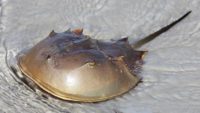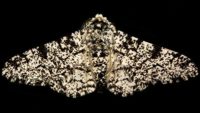It’s exciting when research with medical implications also provides insight into the mechanisms of biological adaptation. Two new studies contribute to a large body of research that not only contradicts the textbook account for the evolution of life on Earth, but also supports the explanation of engineered adaptability. By way of background, the standard account of evolution is a two-step process that supposedly explains how … More… …read more Source: icr.org
By Dr. John H. Whitmore “Living fossils” are organisms that can be found both living in the world today and also found preserved in the rock record as fossils. …read more Source: AIG Daily
How did Neanderthals go extinct? Four researchers from the Netherlands recently published the results of their computer-modeled human populations in the journal PLOS ONE.1 The findings show that small Neanderthal population sizes would have caused them to become extinct in just 10,000 years. How did Neanderthals survive the 400,000 years they were supposedly on Earth? Neanderthals were real people. Hundreds of r… More… …read more Source: icr.org
By Dr. Georgia Purdom Our modern society believes we are just reaching the height of human intelligence. If we accept this evolutionary view, what do we do with the biblical account? …read more Source: AIG Daily
By Dr. Nathaniel T. Jeanson The timescale for the human Y chromosome family tree has been a source of sharp disagreement within the creation/evolution debate. …read more Source: AIG Daily
The latest fossil biochemistry paper, published in Scientific Reports, describes “blood vessel structures” recovered from inside a T. rex femur.1 This is the same femur in which the Journal of Vertebrate Paleontology featured collagen fibers, protein remnants, and possible DNA signatures back in 1997.2 Since then, debate has raged among experts. On one hand, fossil experts keep re… More… …read more Source: icr.org
By Dr. Nathaniel T. Jeanson The young-earth creationist view has been so maligned in popular culture that many people think creationists deny basic facts of life. …read more Source: AIG Daily
By Joel Ebert Watch out—this critter’s outrageous hairdo is more than a fashion statement. With a prickly exterior & a matching disposition, the secret is in the spines. …read more Source: AIG Daily
Is human genetic diversity consistent with Noah’s Flood? …read more Source: creation.com
Let’s explore the answer to a common skeptical question about ‘new information’ in genetics. …read more Source: creation.com
By Ken Ham From reading Genesis, and armed with a basic knowledge of genetics, we can learn a lot about what Adam was probably like. …read more Source: AIG Daily
Our incredible facial expressivity-able to represent 21 distinct emotions-would appear to be overdesigned. …read more Source: creation.com
Have evolutionists changed the genetic code to make protein evolution faster? The evidence shows that they are far from it. …read more Source: creation.com
By Ken Ham The more scientists study the human body, the more obvious it is that we’re “fearfully and wonderfully made” (Psalm 139:14). Our bodies bear the hallmarks of design and the fingerprints of God. And a new study is highlighting that truth by demonstrating, once again, how incredibly designed our brains and systems are. According to a new study, some women who are missing (or, at the very least, have significantly reduced) olfactory bulbs in their brains are still able to smell. It is a surprising result because the olfactory bulbs are the part of the brain known to [More]
Solar cell modelled on butterfly wing absorbs twice as much sunlight …read more Source: creation.com
Eggshell nanostructure shows purposeful construction …read more Source: creation.com
In their quest to try and find some sort of evolutionary similarity between humans and apes, scientists have compared DNA, proteins, anatomy, behavior, and every other conceivable feature. But many of these attempts showed that a huge chasm of dissimilarity exists with no distinct evolutionary connection. And now, a new study comparing saliva between humans and apes is once again showing the uniqueness of humans and the failure of evolution… More… …read more Source: icr.org
By Harry F. Sanders, III Plants communicate in many ways. This article discusses some of the documented “under-the-table” communications. …read more Source: AIG Daily
How could dinosaur proteins persist over 70 million years inside dinosaur bones? That’s one of the biggest questions that secular paleontologists have faced in the last two decades. Many of them reason that some unique but undiscovered set of conditions grant proteins power to defy all odds and somehow survive unimaginable time scales. They think someone, someday, will discover the protein’s secret to survival. A new model sugge… More… …read more Source: icr.org
By Ken Ham Which evolved first—moth ears or bat echolocation? Well, the “textbook” evolutionary story is that bats evolved the ability to make ultrasonic calls, which they used to hunt for moths. And then moths supposedly evolved (several times, apparently) the ability to hear these calls and better evade the hunting mammals. Now, that story has been taught as fact for years. But apparently, a new study says this whole story is backwards! Based on this new study (it assumed evolutionary ideas and relationships in the first place), which was described as a “bit of a bombshell,” evolutionary scientists claim [More]
Genetic engineering is no longer in the realm of science fiction. We review a Netflix series called Unnatural Selection and discuss the implications of the CRISPR-Cas9 technology. …read more Source: creation.com
For more than a century, biologists have appealed to Darwinian natural selection to explain how living organisms adapt to different environments. But research over the last several decades has consistently dethroned Darwin’s view of natural selection. Rather than corroborating the concept that environments mold creatures through “survival of the fittest,” the research supports the astonishing idea that to a great extent creature… More… …read more Source: icr.org
A team has come up with an interesting universal addressing system. But did you know living things have a solution to their own ‘address problem’? …read more Source: creation.com
The ability to distinguish the style of a Picasso from a Monet puts a whole new perspective on ‘bird-brainy’ …read more Source: creation.com
New research goes a long way in explaining how creatures actively sense their environment and adapt to it. One mechanism enables some organisms to track the changing levels of nutrients, hormones, or stress they are exposed to, and then make appropriate responses if and when needed. Andrew Capaldi’s lab at the University of Arizona is responsible for these remarkable findings published in Nature Communications.1 Hi… More… …read more Source: icr.org
By Dr. Tommy Mitchell The story of the peppered moth has been set forth for decades as the prime example of evolution in action. But, are they really evidence of evolution? …read more Source: AIG Daily
Many people of European descent have less melanin in their eyes, and it’s got nothing to do with evolution …read more Source: creation.com











































